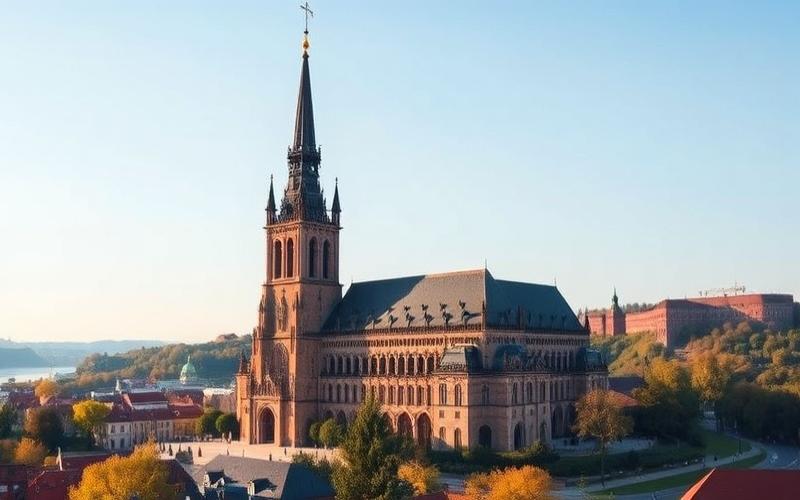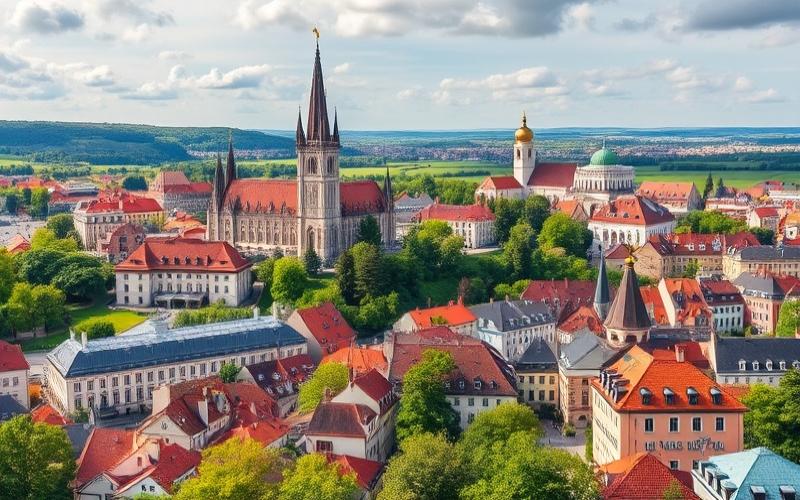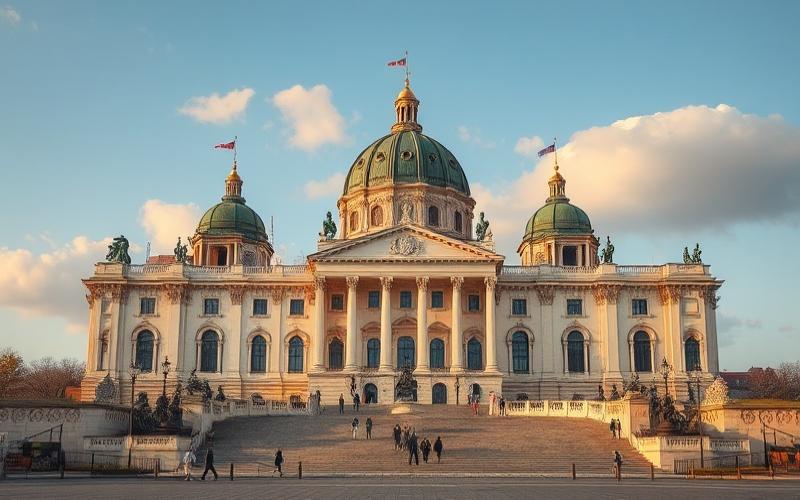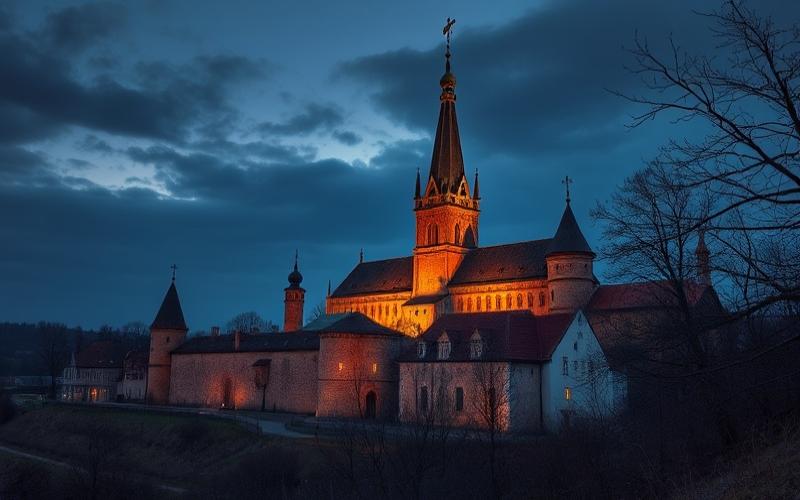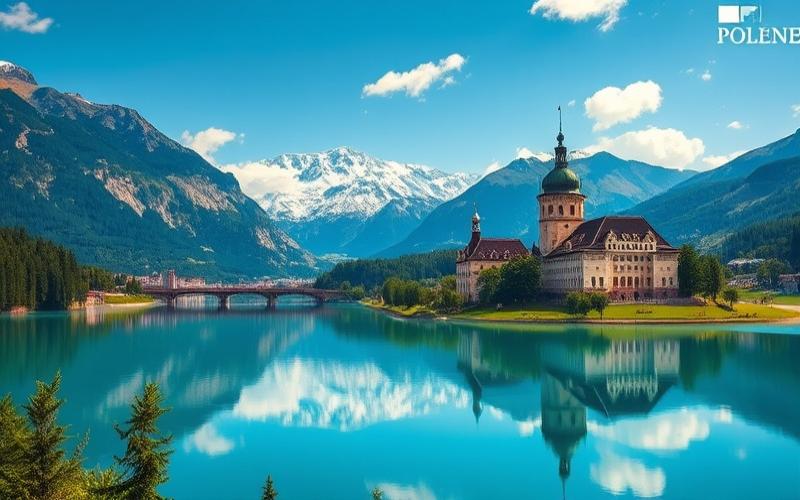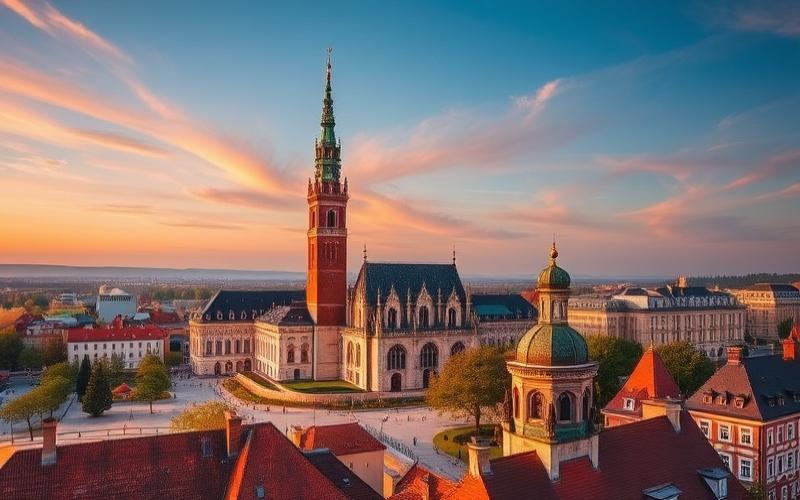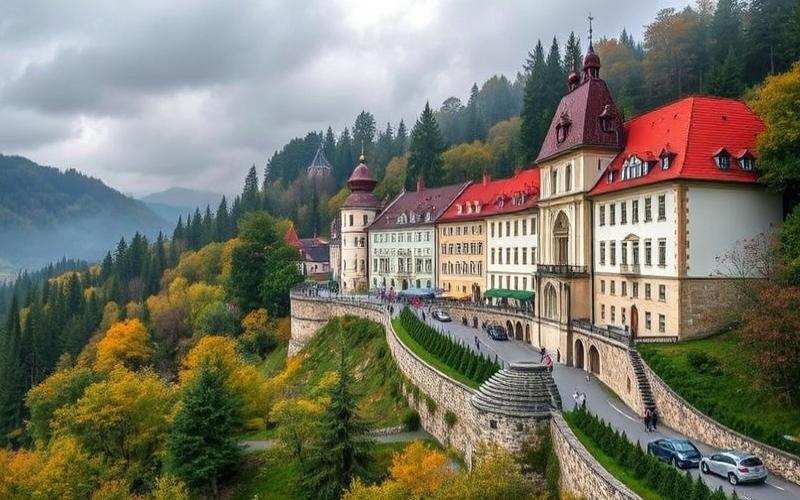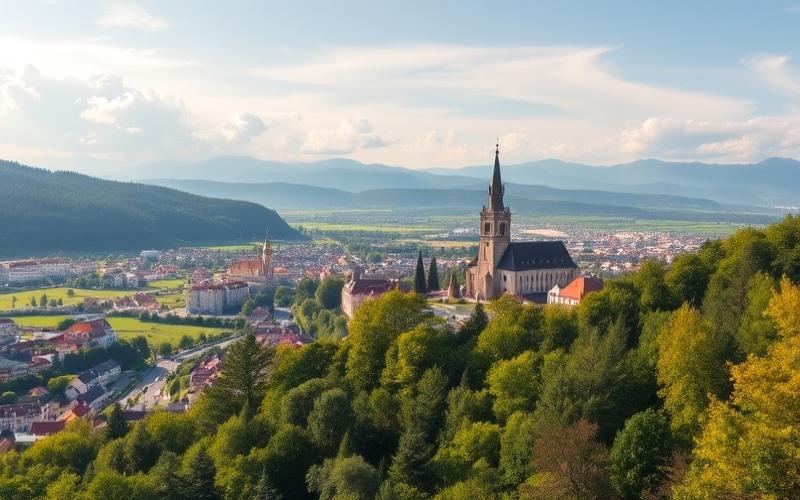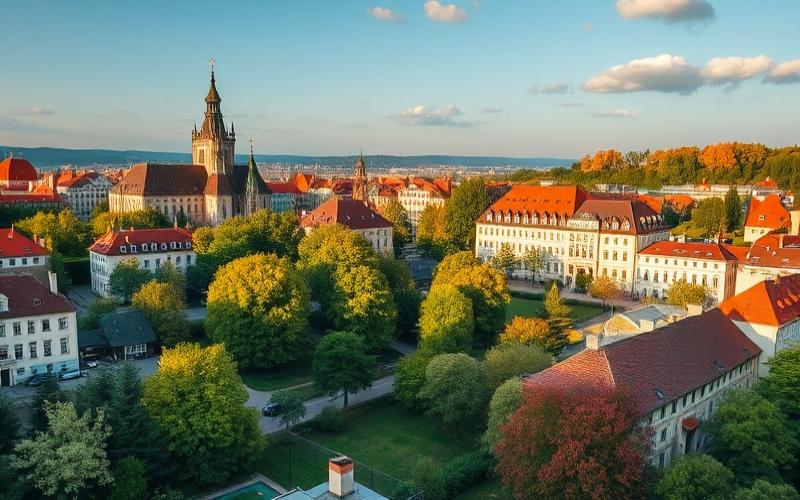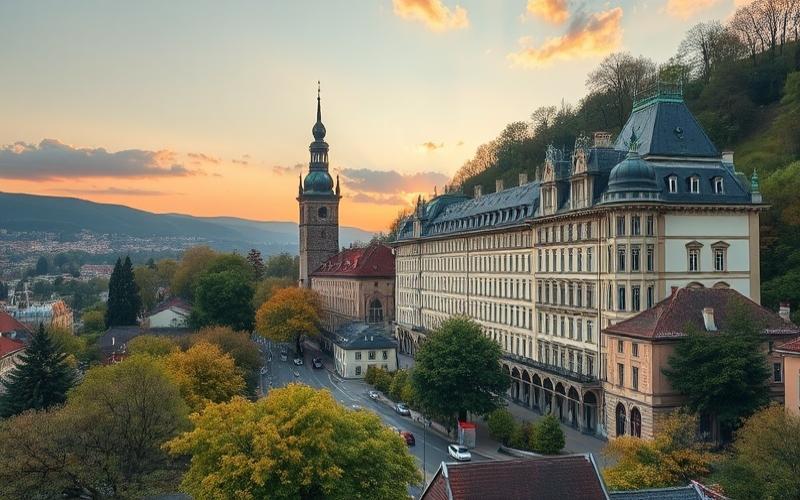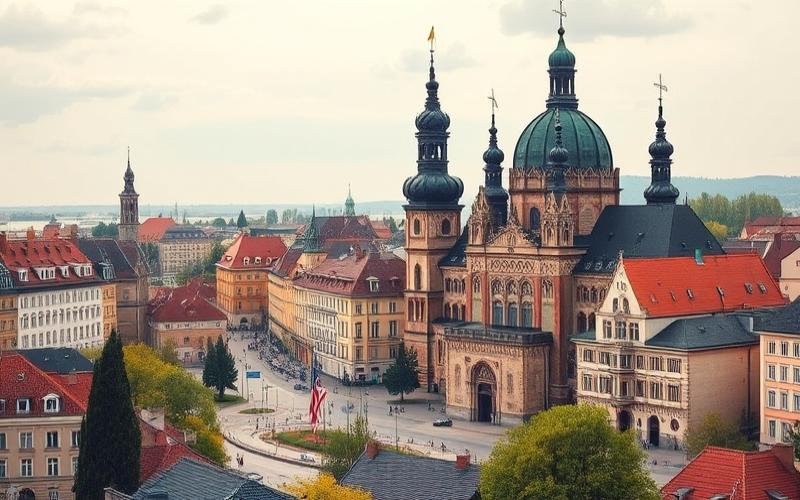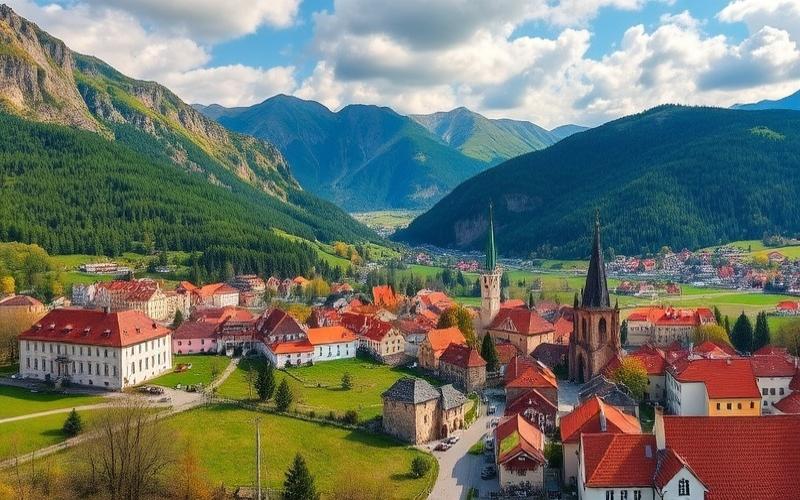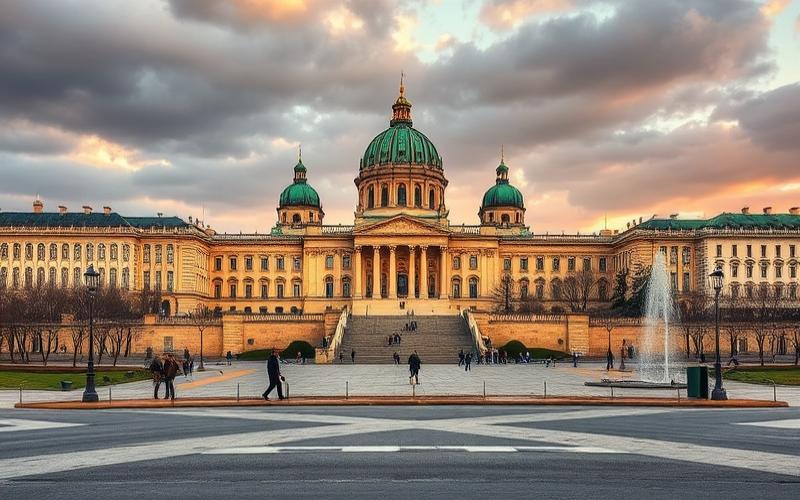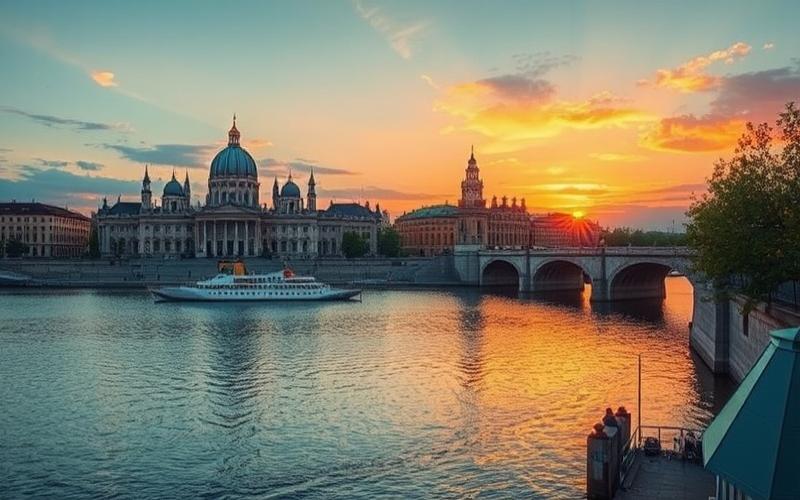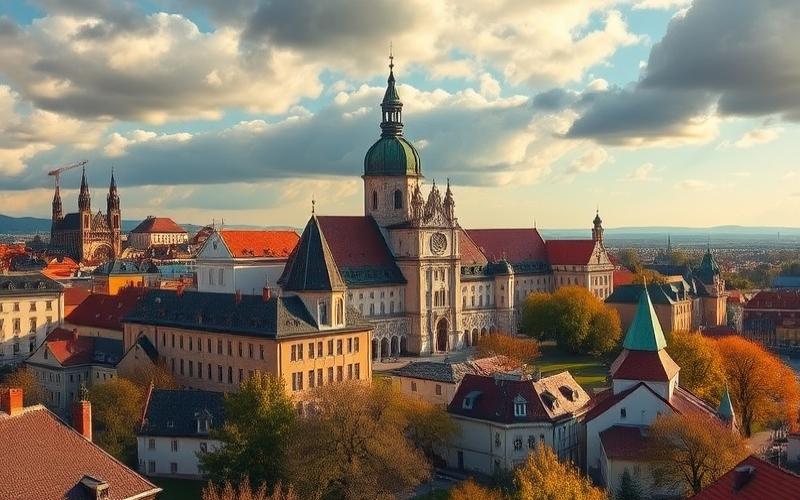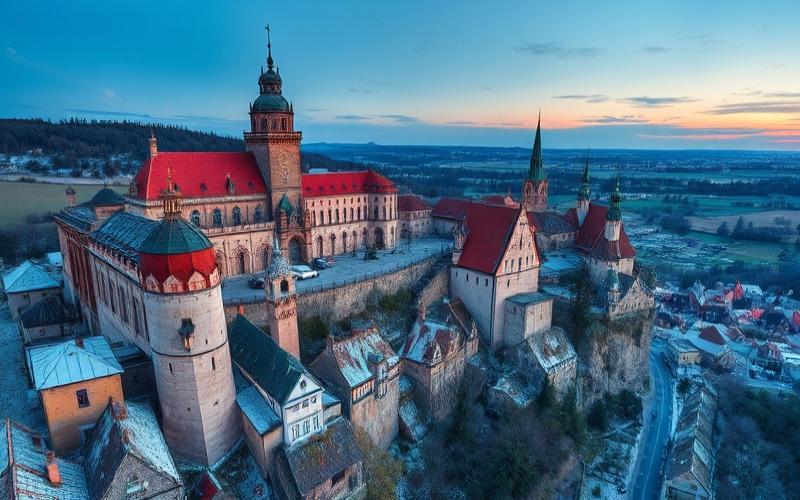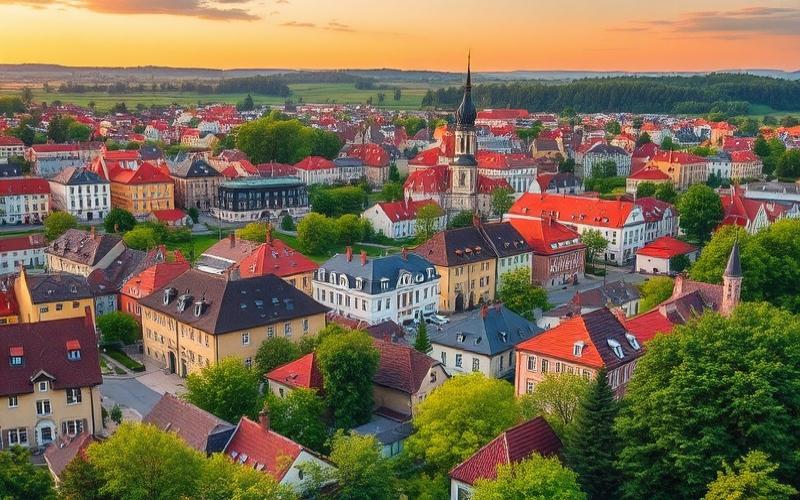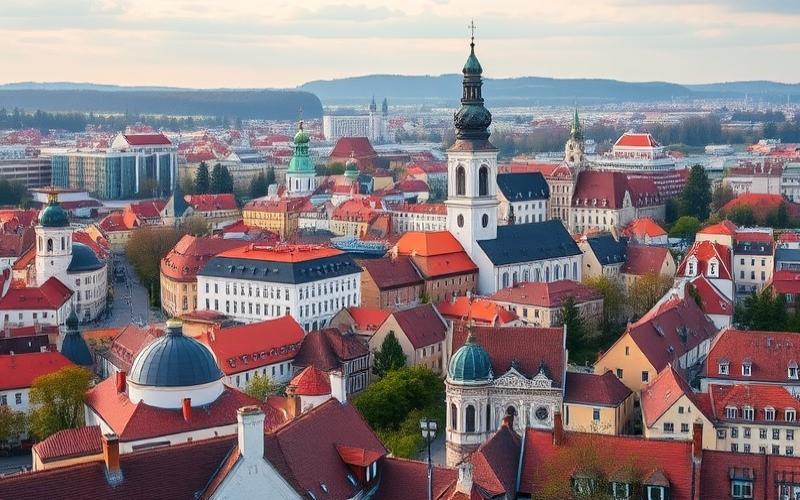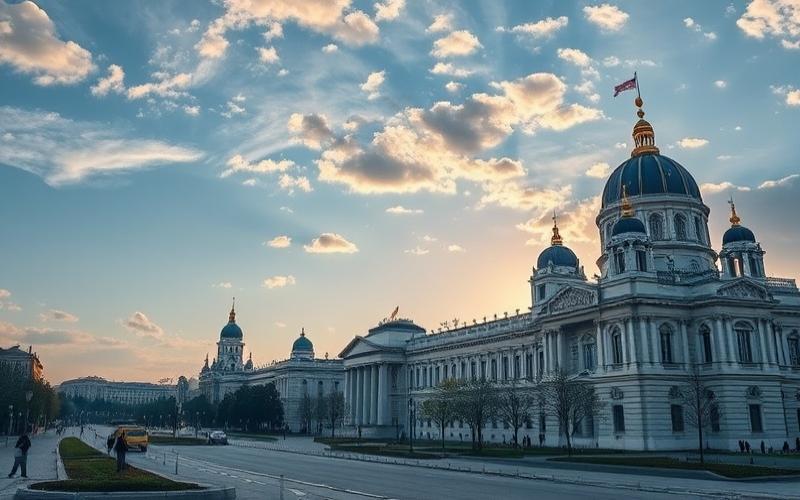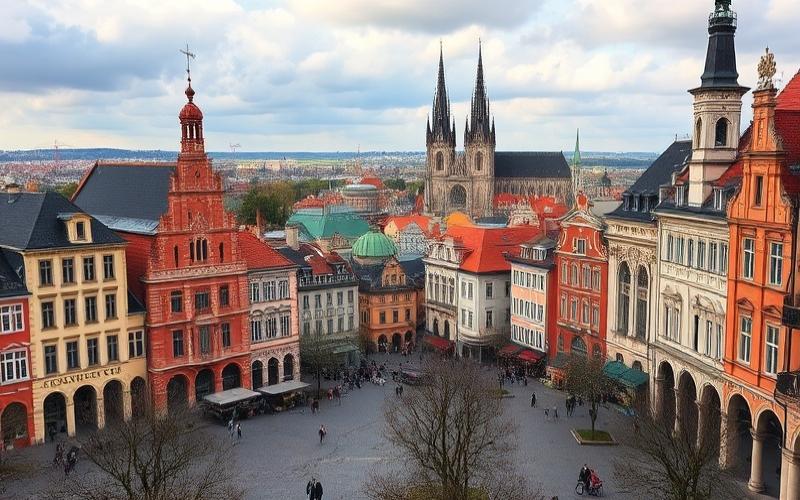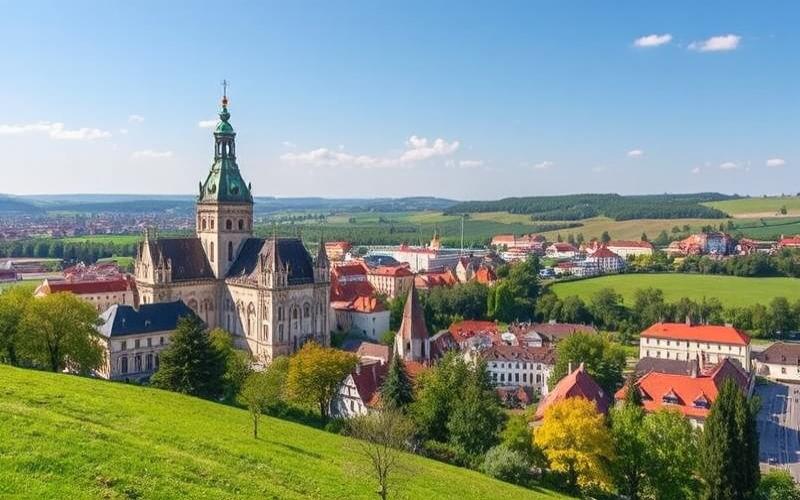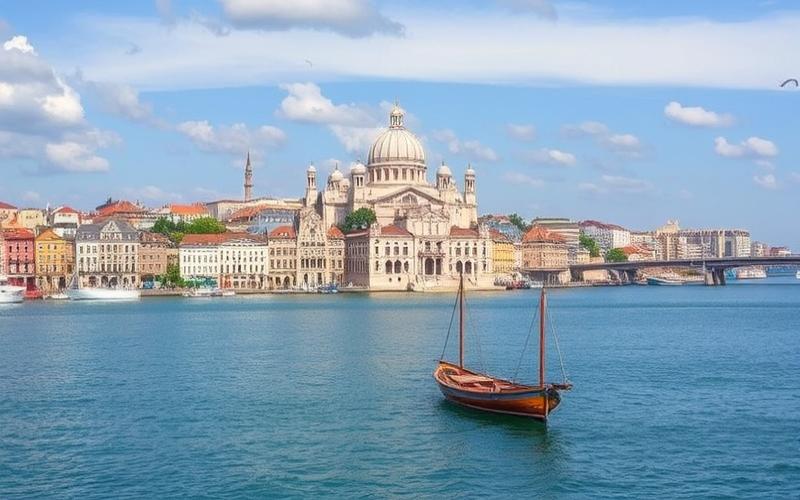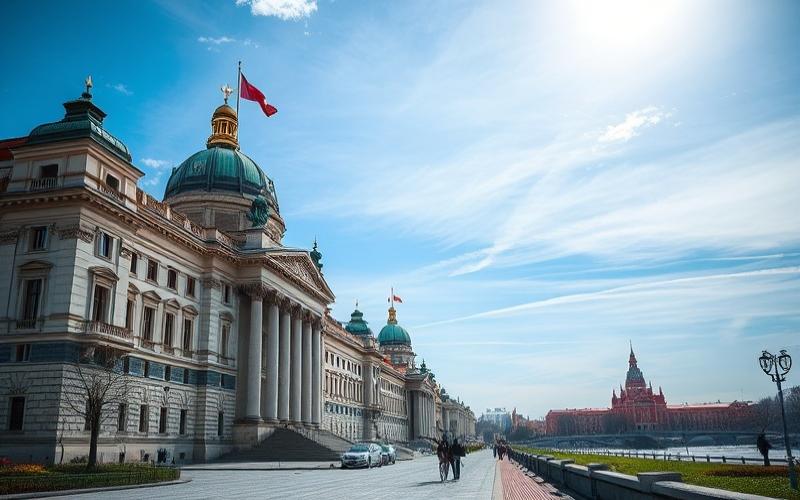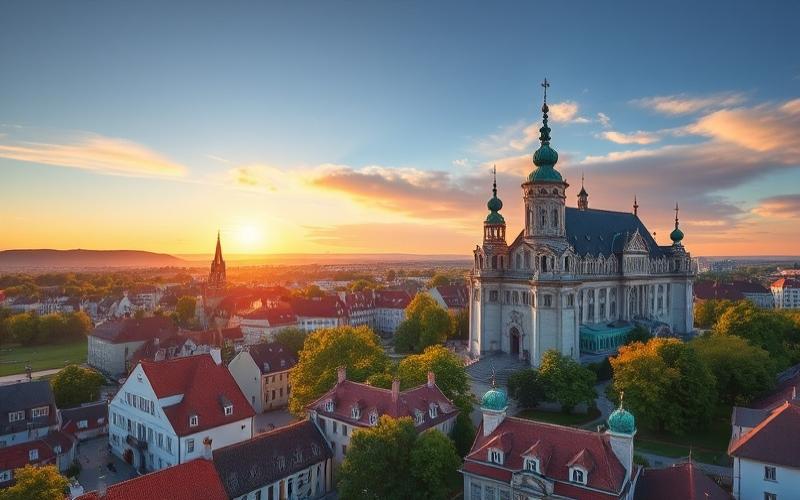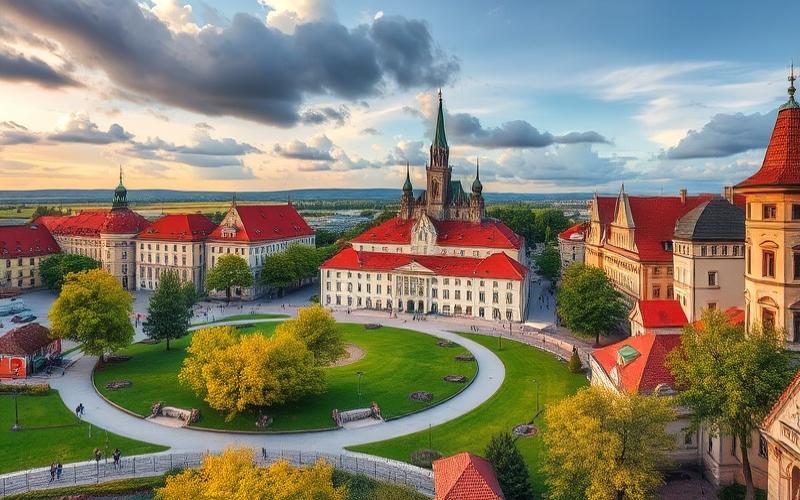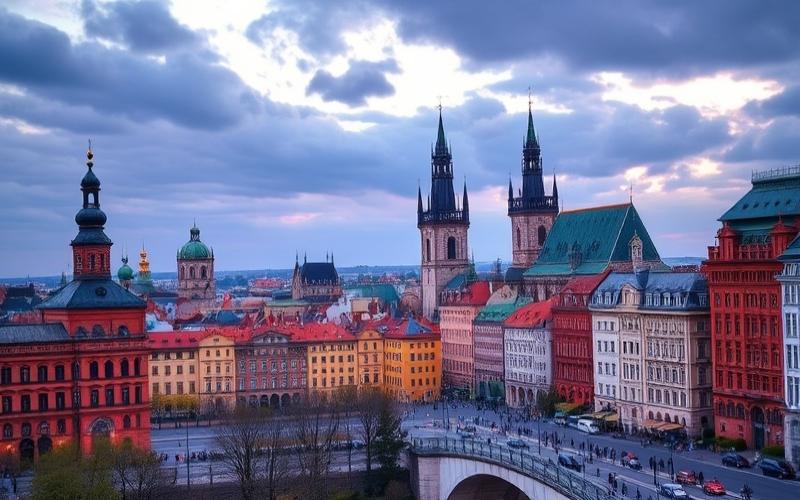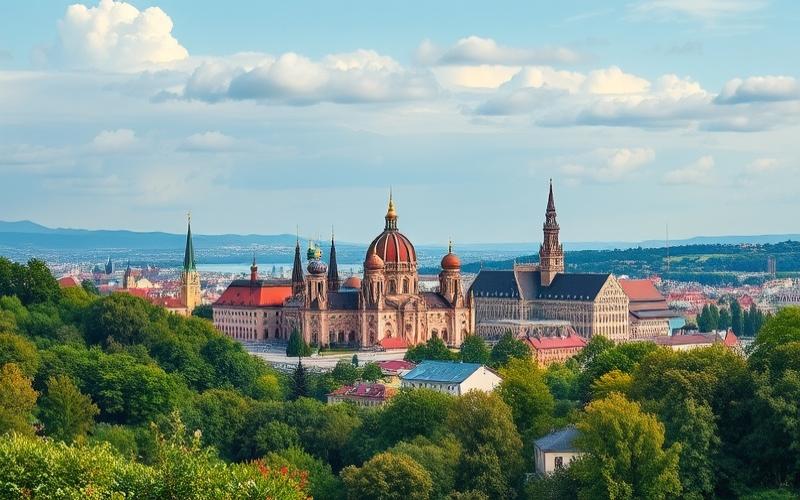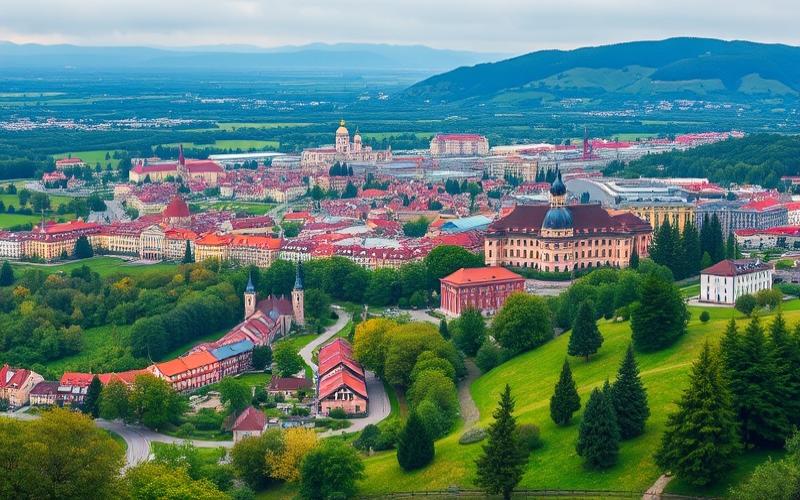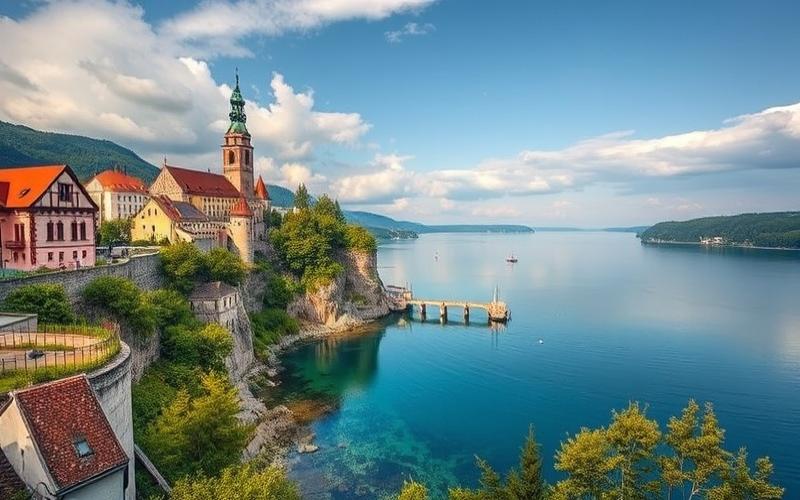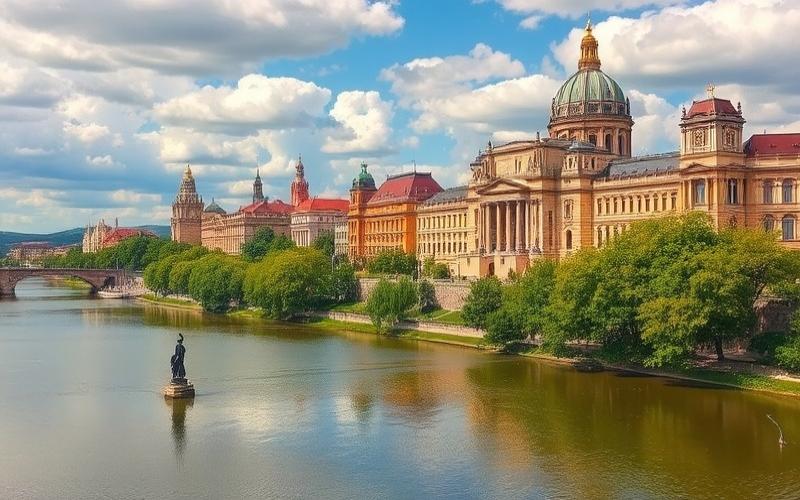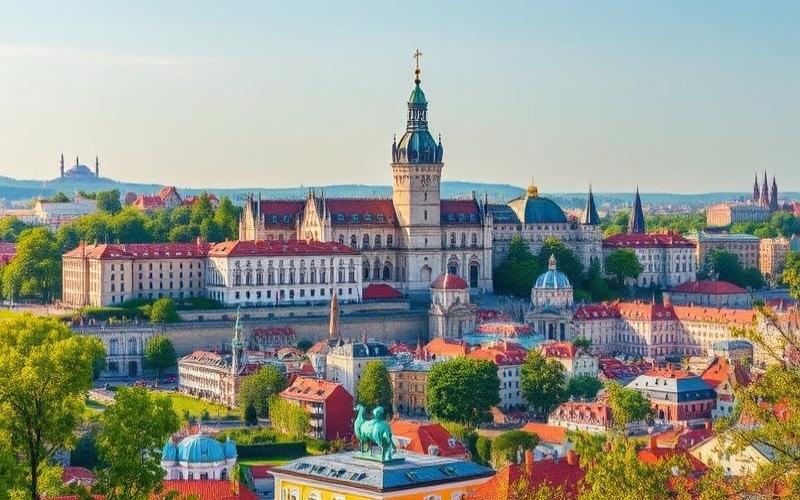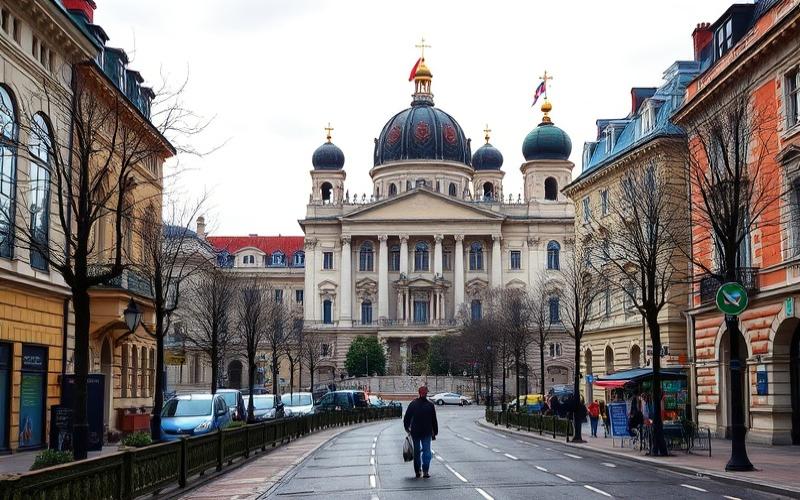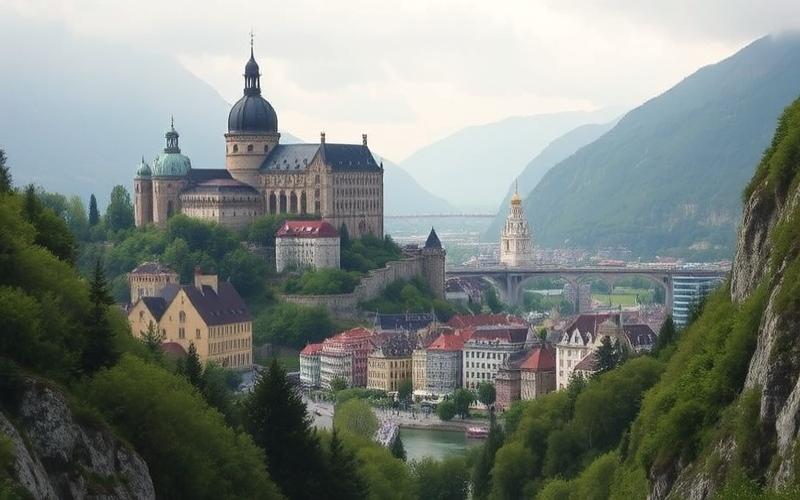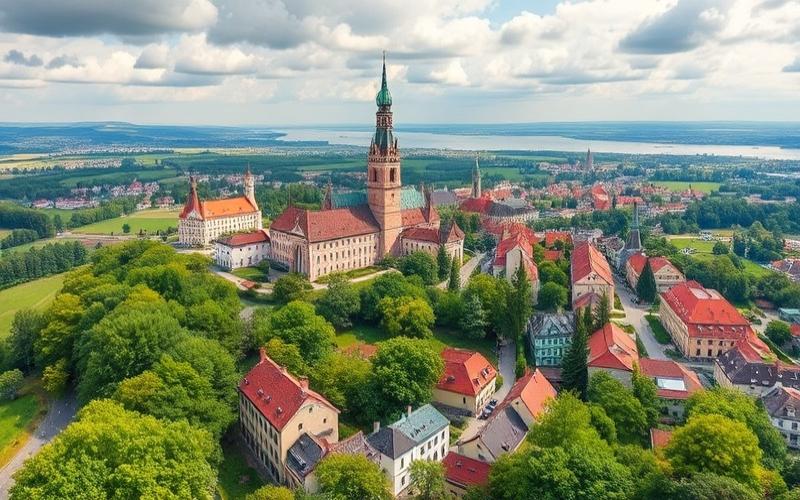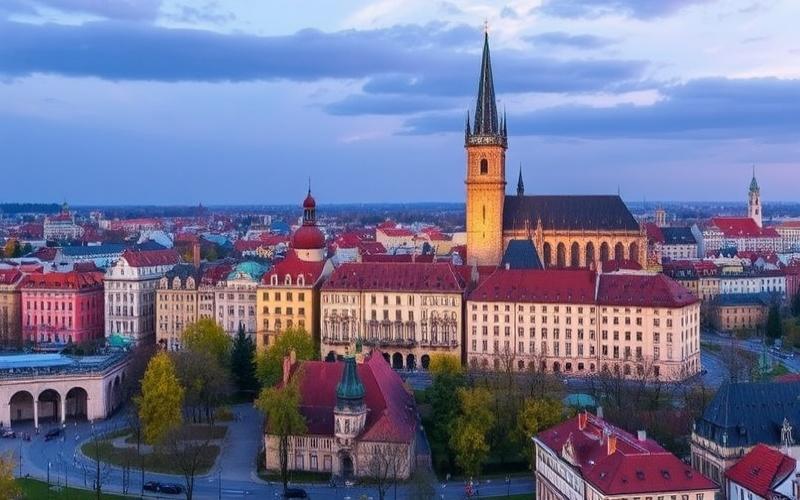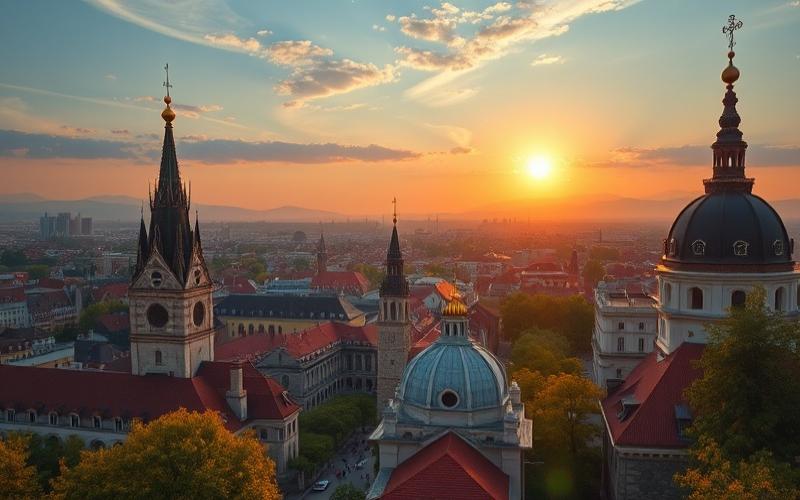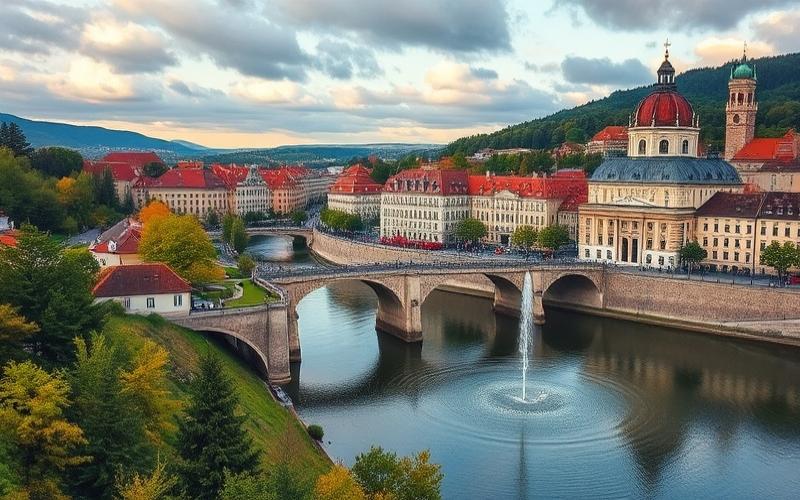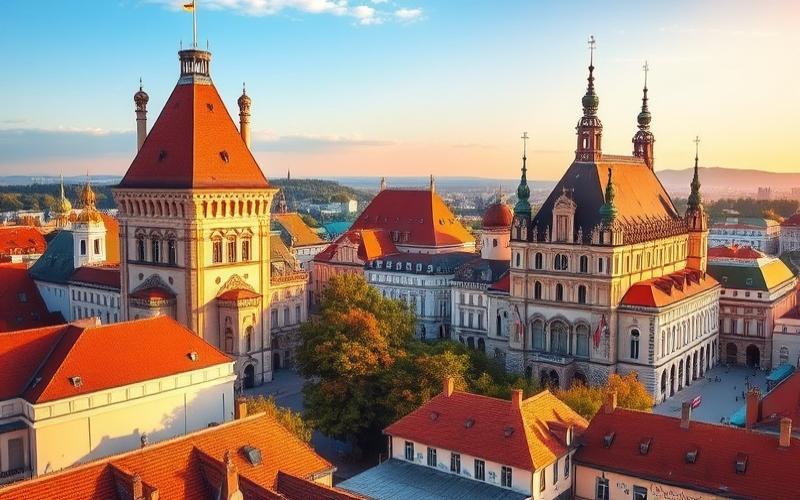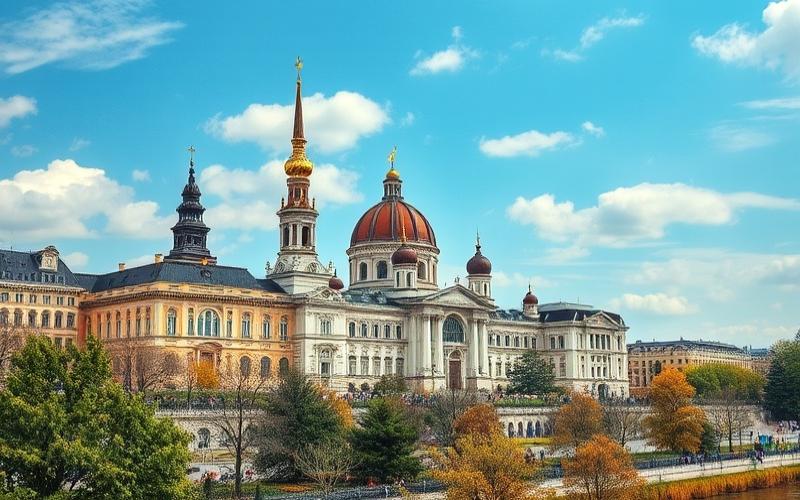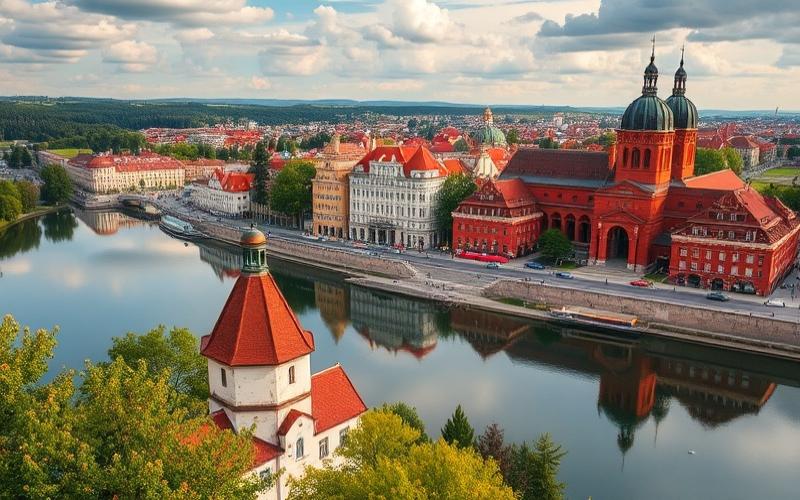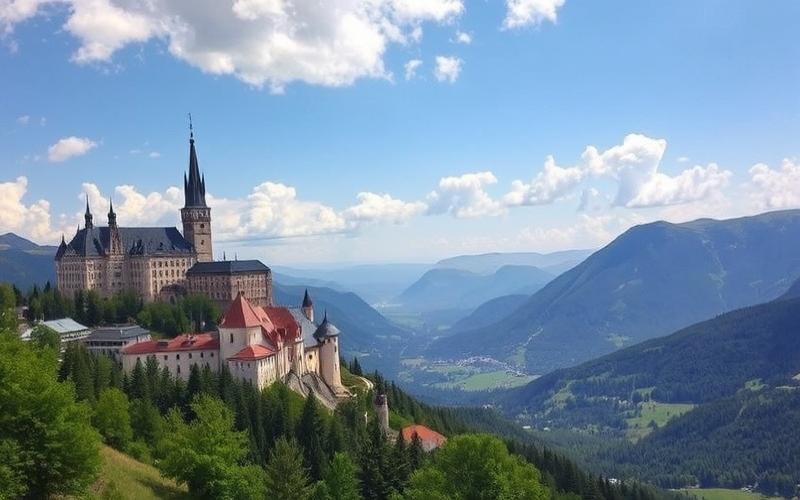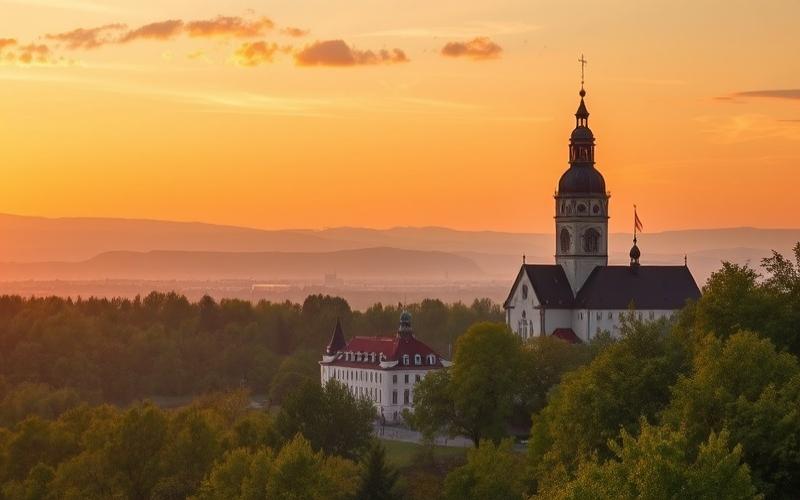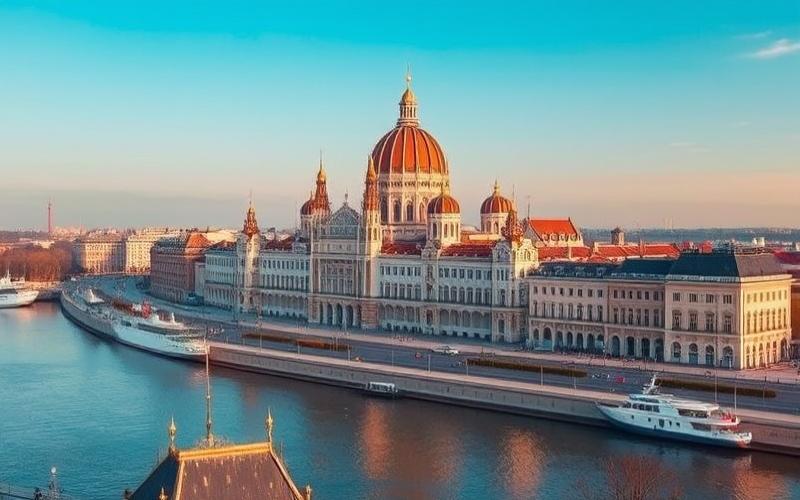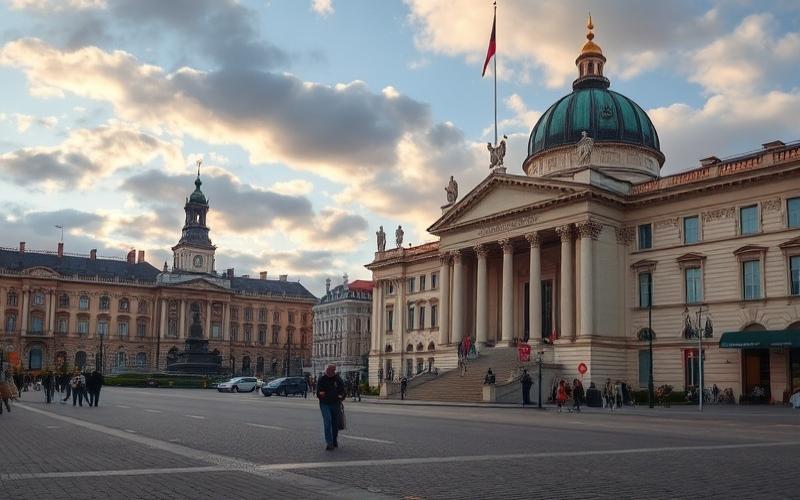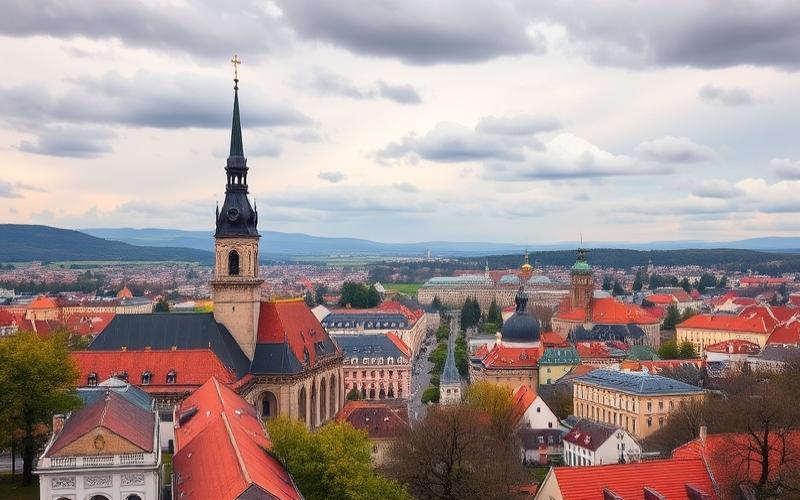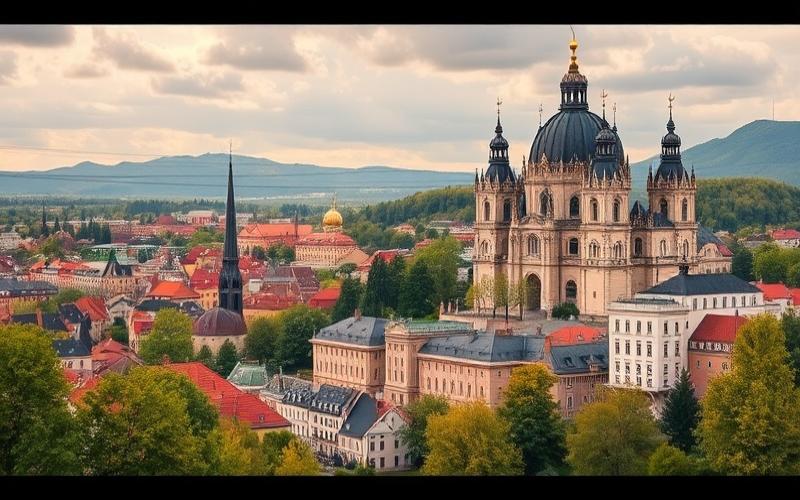
 Published on and written by Cyril Jarnias
Published on and written by Cyril Jarnias
Green Real Estate in Poland: A Booming Trend
Green real estate is gaining popularity worldwide, and Poland is no exception, striving to align its environmental practices with international standards. With the 2025 deadline on the horizon, this sector is undergoing a notable transformation.
Key Drivers of Change
This evolution is marked by:
- The implementation of new ecological standards
- The deployment of government subsidies to encourage sustainable initiatives
Good to Know:
Poland has set ambitious goals to reduce the carbon footprint of its real estate sector by 2025.
Impact on the Polish Real Estate Market
This article provides an in-depth exploration of these dynamics, analyzing how these measures impact the Polish real estate market, while highlighting:
- Government initiatives
- Private sector innovations
These elements are currently shaping the landscape of green real estate in the country.
Introduction to Green Real Estate in Poland
Green real estate, or sustainable real estate, refers to all practices and constructions aimed at reducing the environmental impact of the real estate sector by integrating ESG (Environmental, Social, and Governance) criteria at every stage of a building’s lifecycle. This model addresses sustainable development challenges by limiting energy consumption, reducing carbon emissions, and promoting the use of environmentally friendly materials. It also aims to improve occupants’ quality of life and offer attractive economic opportunities for investors.
Why is Green Real Estate Crucial in the Context of Sustainable Development?
The real estate sector accounts for a significant portion of global energy consumption and CO₂ emissions.
The transition to green buildings enables:
- Reducing energy consumption.
- Lowering operational costs.
- Benefiting from tax incentives and subsidies.
- Increasing property attractiveness and valuation.
- Meeting the growing expectations of tenants, buyers, and investors sensitive to sustainability.
In Poland, green real estate is experiencing rapid growth, driven by environmental awareness and favorable public policies. In recent years, the total area of certified green buildings (BREEAM, LEED, etc.) has increased significantly, exceeding 24 million m² in 2024, compared to less than 10 million m² in 2018. New constructions, particularly in the office and retail sectors, are increasingly incorporating international sustainability standards.
Economic and Environmental Factors Driving Poland Toward Green Real Estate:
- Need to reduce dependence on imported fossil fuels.
- Rising energy costs encouraging energy efficiency.
- European regulatory pressure to reduce greenhouse gas emissions.
- Increased demand from international investors for ESG-compliant assets.
- Growing awareness among the Polish public about environmental issues.
Poland has set ambitious sustainability goals: achieving at least 23% renewable energy in gross final consumption by 2030 and significantly reducing emissions from the building sector. The state offers subsidies for energy renovation, tax credits, and promotes environmental certification to support these objectives.
Key standards and subsidies, such as BREEAM, LEED, WELL Building Standard, as well as public support schemes for energy renovation, play a crucial role in transforming the sector. These instruments will be detailed in the following sections.
Stakeholders in Green Real Estate in Poland:
- Real Estate Developers: Drivers of innovation and integration of ecological standards in new and renovated projects.
- Public and Private Investors: Seek sustainable assets to reduce risks and improve long-term profitability.
- Government Regulators: Develop regulatory frameworks, incentive policies, and ensure compliance with environmental commitments.
| Stakeholders | Main Role |
|---|---|
| Real Estate Developers | Design and execution of sustainable projects |
| Investors | Financing, valuation, and management of green assets |
| Regulators | Defining standards, subsidies, and compliance control |
Key Takeaway: Green real estate is emerging as a strategic lever for Poland, balancing economic growth, international attractiveness, and environmental imperatives.
Good to Know:
Green real estate is part of a comprehensive sustainable development approach by reducing buildings’ carbon footprint through ecological techniques and materials. In Poland, this sector is experiencing notable growth, with a 30% increase in sustainable constructions since 2020, driven by environmental awareness and economic incentives. Green constructions meet modern needs while aligning with the country’s sustainability and renewable energy goals, aiming to decrease dependence on fossil fuels. Poland has adopted strict standards, such as the BREEAM standard, and offers subsidies to encourage these green practices. Real estate developers, supported by public and private investors, play a key role, while the government introduces regulations to strengthen the ecological transition. The following sections will detail the standards to comply with and illustrate the available financial levers, essential for propelling green real estate as both an economic and ecological solution.
Green Building Standards in Poland
In 2025, Poland is implementing rapidly evolving green building standards, in line with European requirements and national initiatives aimed at greening the building sector.
Main Green Building Standards in Effect (2025)
- Enforcement of European Regulation 2024/3110 (CPR2) on construction products, replacing the old Regulation No. 305/2011. This text imposes new definitions (declared use of the product, essential characteristics, etc.), harmonizes the description of environmental performance of products, and introduces a mandatory digital passport for each construction product.
- Strengthened application of the CSRD directive on non-financial reporting: since January 2025, obligated companies must publish an auditor-verified report on their business model, ESG strategy, and environmental objectives.
- Strengthened national obligations regarding sustainable management of construction waste.
Specific Criteria to Qualify a Construction as Ecological
| Criterion | Main Requirement |
|---|---|
| Energy Efficiency | High-performance insulation; reduction in overall energy consumption; compliance with European CO₂ emission thresholds |
| Use of Sustainable Materials | Prioritize low-carbon/recycled/reusable materials; traceability via CPR2 digital passport |
| Waste Management | Mandatory since January 2025 to sort construction waste into six distinct fractions; legal responsibility until final treatment even if outsourced |
| ESG Reporting | Mandatory publication of environmental data according to ESRS |
Agencies and Organizations Involved
- Polish Ministry of Climate and Environment: leads the national development of green policies.
- General Inspectorate for Environmental Protection (GIOŚ): ensures regulatory compliance.
- European bodies: European Commission (CPR2 steering), European Chemicals Agency…
- BDO Platform: national digital registry for legal waste management.
Challenges and Opportunities for Developers & Constructors
Challenges
- Adaptation to new digital procedures (digital passports).
- Necessary investments in insulation, innovative materials, or renewable energy devices.
- Administrative complexity related to CSRD non-financial reporting.
Opportunities
- Easier access to certain national funding or European subsidies dedicated to ecological innovation.
- Increased real estate valuation through strict adherence to new green standards.
Concrete Examples
Non-exhaustive list:
- ING Tech Poland Headquarters in Katowice – BREEAM Excellent certified: high-performance insulation, double-flow ventilation with heat recovery.
- Nowe Żerniki District in Wrocław – urban project integrating on-site waste recycling and extensive use of locally certified FSC/PEFC wood.
International Comparison
Poland is progressing but remains slightly behind some Nordic countries or Germany, which already impose stricter passive or positive standards for new constructions. However:
| Country | Main Obligations | Energy/Carbon Requirement Level |
|---|---|---|
| Poland | CPR2 + CSRD + waste sorting | Progressive convergence with EU |
| France | RE2020 | More ambitious carbon thresholds |
| Germany | EnEV/GEG | Frequent “passive house” standards |
Key Takeaway:
Warsaw’s accelerated integration of the new European CPR2 regulation now positions Poland as a committed player in continental harmonization on green building, while still needing to catch up with some European leaders regarding the maximum requirements imposed on new constructions today.
Good to Know:
In 2025, Poland has strengthened its green building standards with demanding regulations regarding energy efficiency, use of sustainable materials, and waste management. Constructions must achieve near-zero energy consumption performance and use materials such as certified wood or recycled content. Supported by agencies like the Ministry of Climate and Environment and the National Building Institute, these rules aim to align Poland with international standards, although challenges remain, including additional costs for developers and the need for better artisan training. Exemplary projects include the University of Wrocław campus, BREEAM certified, which exceeds green building standards. Comparatively, Poland ranks well on the European scale for ecological standards, offering real opportunities for investors committed to green real estate.
Subsidies for Renewable Energy: Opportunities in Poland
In 2025, Poland offers several subsidy and funding programs to support renewable energy projects, aligning with European sustainability and energy transition goals.
Main Available Subsidy Programs
| Program/Initiative | Available Amount | Type of Project Supported | Source of Funds |
| National Recovery Plan (KPO) & REPowerEU | €25.28 billion (grants) + €34 billion (loans) until 2027 | Electrical grids, offshore wind, energy storage, clean buses | European Union |
| Polish State Funds via PFR SA | ~3 billion PLN/year (~$730 million/year) | Offshore wind farms, energy storage | Polish State |
| InvestEU & EIB | Targeted funding (>€1 billion/year on energy transition) | Real estate energy efficiency, green building renovation | EU/EIB/Pekao Leasing/etc. |
Eligibility Criteria and Procedures
- Criteria vary by program but generally include:
- Being a Polish company or consortium with a local entity.
- Presenting a project aligned with national or European strategy (e.g., renewable energy production).
- Technical and financial capacity to carry out the project.
- Priority given to innovative technologies or those with high environmental impact.
- Standard procedures:
- Online submission of application to competent agencies (e.g., Ministry of Climate for KPO; PFR SA for national funds).
- Selection via call for projects with technical/environmental analysis.
- Allocation after validation by administration and signing of financial agreements.
Government Goals and European Alignment
- Gradually reduce dependence on coal in favor of nuclear and especially renewable energy.
- Achieve European climate goals defined in the Green Deal, notably an increased share of renewables in the national energy mix (>30% planned by end of the decade).
- Strengthen energy independence while stimulating the green economy through massive investments from the REPowerEU plan.
Concrete Examples – Green Real Estate Projects Benefiting from Subsidies
Non-exhaustive list:
- Ecological modernization of the Biedronka chain: over 1,500 stores renovated thanks to EIB funding dedicated to energy efficiency. Impact: significant reduction in electricity consumption; decrease in CO₂ emissions; substantial operational savings.
- Maspex factories: industrial modernization integrating photovoltaic solar panels financed by an EIB loan. Result: partial decarbonization of the industrial process; creation of local jobs related to ecological work.
Economic and Environmental Impact
- Notable acceleration of the sustainable construction/renovation sector due to new standards imposed by public calls for projects.
- Direct/indirect creation of specialized jobs in green technical fields (PV/wind installers; CSR engineering…)
- Measurable improvement in air quality/urban locality through reduced pollutant emissions from traditional heating replaced by clean solutions.
2025 Green Real Estate Market Trends & Outlook
Summary list:
- Strong growth in “green building” certified constructions – increased demand from institutional investors seeking ESG-compliant assets
- Systematic integration of solar technologies/heat pumps/low-consumption home automation systems in new collective housing
- Increased patrimonial value of HQE/BREEAM labeled properties following tax incentives/direct subsidies
- Outlook: accelerated convergence between national/European regulatory requirements that will soon make low-carbon solutions indispensable in all residential/commercial segments
Key Takeaway
Current public policies are structurally transforming the Polish real estate market toward greater environmental sustainability while stimulating local technological innovation—a phenomenon set to intensify under combined pressure from European regulation/massive public investment.
Good to Know:
In 2025, Poland offers several subsidies to encourage renewable energy projects, notably through the “Czysta Energia” program, which funds up to 40% of installation costs for projects compliant with EU environmental standards. Eligibility criteria include geographical location and technological innovation, while applications require detailed feasibility studies. As part of its energy transition goals, the Polish government aims to align its efforts with the European Green Deal initiative, seeking to reduce emissions while increasing renewable energy production. Green real estate projects, such as the eco-responsible complex in Warsaw, have benefited from this funding, generating substantial energy savings and notable environmental benefits. In 2025, the green real estate market shows positive momentum, with growing adoption of renewable technologies. Future prospects include increased support for building energy efficiency, strengthening the real estate sector’s competitiveness and urban sustainability in Poland.
BREEAM Certification in Poland: An Example to Follow
BREEAM (Building Research Establishment Environmental Assessment Method) certification was introduced in Poland in the 2000s, with gradual adoption driven by foreign investment dynamics and rapid real estate sector development. Initially concentrated in major office and commercial projects in Warsaw, BREEAM adoption expanded to industrial and logistics sectors, notably thanks to players like Panattoni who integrated certification into their development standard by the late 2010s.
Recent Statistics on BREEAM Certification in Poland:
| Country | Total Number of BREEAM Certified Buildings* | Reference Year |
| United Kingdom | >12,000 | 2023 |
| Germany | ~1,500 | 2023 |
| France | ~900 | 2023 |
| Poland | >700 | 2023-2024 |
*Precise figures vary by source and include all asset types (offices, retail, logistics).
Poland now ranks among European leaders in the number of certifications issued outside the United Kingdom, ahead of several Central and Eastern European markets.
Government Incentives and Subsidies:
- To date, there is no direct national subsidy specifically dedicated to obtaining BREEAM certification.
- However, the Polish government supports energy efficiency through various legislations (obligations on energy performance of new or renovated buildings) as well as certain tax schemes for eco-energy investments.
- Local authorities may sometimes offer indirect benefits (accelerated administrative processing or temporary reduction of certain local taxes for exemplary projects).
Environmental and Economic Impact of Certified Green Projects:
- Measurable Reduction: Certified buildings consume significantly less energy (-25% on average), reduce their CO2 emissions, and optimize water usage through smart management.
- Increased Attractiveness: A certified building more easily attracts international tenants/companies concerned with CSR.
- Real Estate Valuation: Both rental and sales values are higher (+5 to +10% according to sector studies).
- Structuring effect on the entire sector, pushing local developers to gradually adopt these high standards.
Concrete Examples in Poland:
Non-exhaustive list:
- Warsaw Spire (Warsaw)
- Certification: BREEAM Excellent
- Ecological Features:
- Double-skin facade reducing air conditioning/heating needs
- Advanced rainwater harvesting systems
- Green spaces integrated into the urban project
- Panattoni Park Szczecin III – Halls A & B
- Certification: First industrial “BREEAM Outstanding” in Poland
- Solutions implemented:
- Complete lifecycle analysis from design
- Continuous monitoring of energy/water consumption during construction
- Maximum reduction of CO2 emissions during construction/operation
- Future climate adaptation & usage flexibility
- V Offices Kraków
- Certification: High level (“Excellent”)
- Key strengths:
- Innovative waste management during construction/operation,
- Priority given to local materials/low carbon impact,
- Easy access to public transport/bicycles.
Persistent Challenges for Widespread BREEAM Label Adoption:
- Initial cost considered high by some national developers or small investors;
- Relative lack of local expertise among architects/engineers trained in international standards;
- Limited regulatory weight compared to current voluntary status;
Potential solutions:
- Massive development of specialized local training (in partnership with PLGBC);
- Targeted tax incentives for costs exclusively related to the independent environmental labeling process;
- Increased awareness among end-users/institutional lessors to systematically require this type of label in calls for tenders for new real estate projects;
In summary:
The rapid progression in the number of labeled buildings illustrates Polish dynamism; however, increased public support combined with rising local technical competence will further accelerate this green transition across all national construction typologies.
Good to Know:
Since the introduction of BREEAM certification in Poland in the early 2000s, the country has seen a significant increase in the number of buildings adopting this green standard, with over 700 certified projects, positioning Poland as one of the leaders in Central Europe. The Polish government actively supports this adoption through subsidies and tax incentives for sustainable constructions. For example, Varso Place in Warsaw remains an iconic model, combining energy efficiency and use of local materials, while improving indoor air quality. However, Poland faces challenges such as lack of widespread awareness and high initial costs. Awareness campaigns and development of adjusted funding could address these obstacles, reinforcing the positive economic and ecological impact observed by many investors and developers.
Disclaimer: The information provided on this website is for informational purposes only and does not constitute financial, legal, or professional advice. We encourage you to consult qualified experts before making any investment, real estate, or expatriation decisions. Although we strive to maintain up-to-date and accurate information, we do not guarantee the completeness, accuracy, or timeliness of the proposed content. As investment and expatriation involve risks, we disclaim any liability for potential losses or damages arising from the use of this site. Your use of this site confirms your acceptance of these terms and your understanding of the associated risks.

